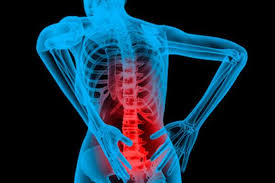
The COVID crisis has accelerated our movement to modern…
The COVID crisis has accelerated our movement to modern virtual technology.
One of the casualties of the COVID crisis has been our annual information day normally hosted at St. Mark’s Hospital which previously had been the highlight of the Red Lion Group calendar. In 2020, when it became obvious that an in-person event would not be possible, it occurred to me that this would be a perfect opportunity to utilise the Zoom technology to replace the information day with a series of “Virtual events” – and hence our Zoom into Summer Series was launched for the summer of 2020. In fact, this technology was not that new. I had been using equivalent platforms such as WebEx and GoToMeeting for many years in my professional capacity – but suddenly this virtual meeting technology had become mainstream, and “zooming” and dare I say, “You’re on MUTE!” also became part of our everyday vocabulary!
In fact, using this virtual platform made the logistics of hosting this event much simpler. No longer did we have to try to coordinate the availability of the potential speakers around one particular Saturday. Separate events could be scheduled at the convenience of each speaker. The Ladies and Gentleman’s “workshops” that previously ended the day at the Information Day were replaced with regular monthly Open Zoom Forums. However, one of the biggest advantages of the “Virtual format” has been the accessibility of the events irrespective of geographic location. We have virtual attendees from all around the UK including Wales, Scotland and Ireland, from Europe (Notably France and Portugal) and we also have some regular attendees from the USA, East and West Coast.
Although it is our intention to host an in-person Information Day at the earliest opportunity (hopefully in 2022) it is also intended that we will continue with our virtual events for the foreseeable future.
The Red Lion Group Website has been significantly improved together with a new easy to remember URL
You have probably noticed that our website was significantly re-vamped a couple of years ago. Thanks to D&AC who put together the new framework. This has been a major leap forward for us and raised our profile tremendously. The new site at pouchsupport.org is at the very top of the Google search results when people are searching for pouch support related information. The available resources are continually expanding making our site the “go to” place for pouch related information and the number of visitors continues to increase – not just from the UK but from around the globe.
Another step was to link our website with the most active Facebook discussion group J-Pouch Support (UK Specific). This group has over 1,000 members and is very active on a daily basis. Visitors can read the activity on this group directly from the FORUM section of our website. See https://pouchsupport.org/forum . (As it is a closed group, to contribute to the group – you need to submit a join request on Facebook).
The membership process has been streamlined and our membership continues to grow
As part of the modernisation, we have also streamlined the membership application process. Visitors can now submit a membership application directly from the website. (See pouchsupport.org/join). We have also registered with a charitable payment portal called CAF (Charity Aid Foundation) which simplifies the fee payment and donation process.

We recently also introduced a unqiue “Can’t Wait” membership card – the only such card designed specifically for pouchees. One side is a traditional “Can’t Wait to use a Loo” message in various languages, and the reverse side is a Medic Alert which has an explanation of our condition together with a URL and a QR code that links directly to a more detailed medic alert page on our website (see pouchsupport.org/medic )
Our membership numbers are on the rise, and it is likely that this is very much related to a combination of the steps we have taken as outlined above – specifically the website, the zoom meetings, and the membership card. As a result, in 2021 to date, we added 88 new members!
Whereas the Red Lion Group was originally founded as a St. Mark’s centric support group, you can see from the picture below the geographic spread of our current membership.

We appreciate your continued support and remind you that the Red Lion Group is run entirely by volunteers. Membership fees cover our expenses (which are minimal) and surplus funds are donated to the St. Mark’s Hospital Foundation. We recently made a donation of £5,000 to the Foundation. (See https://pouchsupport.org/rlg-donates-5000-for-pouch-related-research/).
Best wishes & Seasons Greetings from
Gary Bronziet
Membership Secretary and IT
membership@pouchsupport.org
























You must be logged in to post a comment.